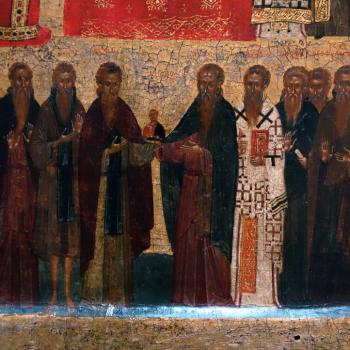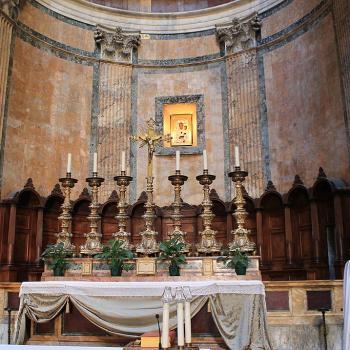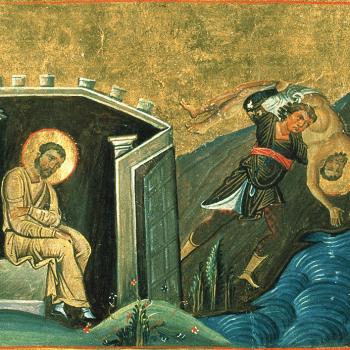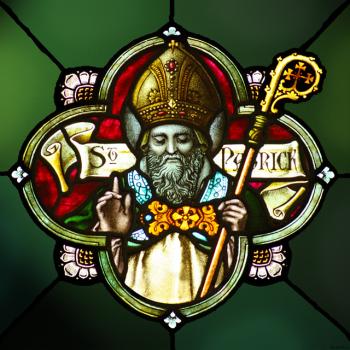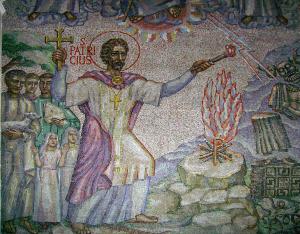
While St. Patrick did not drive out snakes from Ireland, the legend suggesting he did is sometimes understood as a metaphor to the way he spread the Christian faith. Thus, some say it means that he came to Ireland and enlightened it with the light of Christ, casting out the dark shadows of sin and the spiritual ignorance of Ireland’s druidic past. This interpretation is problematic because Patrick did not eliminate the pre-Christian faith from Ireland. When he died, major centers of the ancient faith remained. And where the Christian faith was embraced, it was often taken on in an enculturated form, so that Christians continued to follow many of the practices and traditions which were handed to them by their pre-Christian forefathers.
Nonetheless, there is something of value to be found in the legend. It suggests that Patrick cared for the people of Ireland. He wanted to make the land as best he could. He wasn’t only concerned about their spiritual well-being, but also their general livelihood as a whole. Removing snakes from Ireland would have little to no spiritual meaning in and of itself; if Christian work should be seen exclusively spiritualistic, then why would should a Christian bishop be concerned about snakes? But Christianity is not some gnostic spiritualism, it is also concerned with the world at large. The legend of Patrick’s expulsion of snakes represents this aspect of the Christian faith, reminding us that our care can and should be with what happens in history and not just what happens after death. [1]
The historical Patrick, though not a great writer, showed in his Confession the kind of person he was, and why he became a man who would be much beloved around the world. He, who had once been an escaped slave from Ireland, found his heart with the people who once had enslaved him. He wanted the mercy and grace of God to come to them, to change them, to make them better. It was not easy. Not only did he find himself contested by many of the Irish themselves, he was initially rejected for the task by those who exercised ecclesiastical authority over Ireland. When he was nominated to be the first bishop for Ireland, he was rejected and Palladius was sent over instead. Palladius’s mission was a failure in Ireland, and shortly afterward, Patrick was to take his place, while Palladius, it is said, found himself with the Scots, becoming their bishop instead.
Patrick’s love for the Irish people manifests itself in a few ways in his writings. Perhaps, the most interesting aspect of it is found in his concern with the women. Many of them, some of noble birth, converted to the Christian faith and wanted to take on a religious vocation, much to the contention of their families. While praising the women, virgins and widows alike, who dedicated themselves to the religious life of some sort, he took notice of the pains and sorrows of women slaves, recognizing the great trials and tribulations they faced for embracing the Christian faith:
But greatest is the suffering of those women who live in slavery. All the time they have to endure terror and threats. But the Lord gave His grace to many of His maidens; for, though they are forbidden to do so, they follow Him bravely.[2]
As a former slave himself, Patrick could only sympathize with the plight of the slaves. He recognized the nobility of spirit of those women slaves who gave themselves over to Christ. His voice gives us but a small glimpse of a contingent of Christian thought that was growing to understand and deplore the hardships of slavery. Women slaves were easily sexually exploited, and clearly, that would have been one of the many concerns Patrick had when he saw them becoming Christians. He saw that they endured much torture for the faith, among which would have been sexual abuse; he did not call them shameful if they suffered from such an attack, but rather demonstrated the greatness of their faith. They remained faithful to Christ even if it meant their masters would and did abuse them, showing that we, too must remember this when dealing with victims of sexual abuse: those who unwillingly suffer at the hands of others remain noble and true no matter what is done to them. Those who have been abused should feel no shame in their abuse, no matter what kind of abuse it was. Only the abusers themselves are guilty of all that is done and will face the consequences of their deeds.
Patrick was able to help the people of Ireland because of his own love for them. He who had been a slave, become a servant of Christ, sharing the love he got from Christ with the very people who once had enslaved him:
I was freeborn according to the flesh. I am the son of a decurion. But I sold my noble rank – I am neither ashamed nor sorry – for the good of others. Thus I am a servant in Christ to a foreign nation for the unspeakable glory of life everlasting which is in Christ Jesus our Lord. [3]
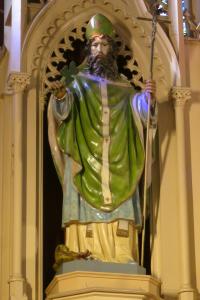
Though he was educated late in life, and felt himself to be less prepared than many others for the work he was to do, his wisdom was able to overcome any deficits his lack of scholarly insight might otherwise have caused him in his mission. It was his wisdom which allowed him to inspire a nation. It was this wisdom which often became represented by the various legends which developed concerning him. He was a fool for Christ who had a wisdom far greater than those who were considered wise in the world. And it is in this wisdom he also knew he could not reject all that was good coming from the Irish tradition: Celtic spirituality shows how Ireland embraced the best elements of its spiritual patrimony, even as Patrick worked hard to convert and elevate native Irish to the priesthood so that they could have a truly enculturated from of the Christian faith.
Patrick, the Enlightener of the Irish, represents one of the greatest missionaries of the early church. It was his love for the Irish and his hard-earned wisdom which allowed him to be a success. Palladius, though far more educated, far more well-trained, was unable to meet the needs of the Irish people. He was cast out, making room for Patrick to take his place in history. Patrick, the son of a decurion, Patrick, the former slave, Patrick, the liberator of Ireland, showed his concern for the people of Ireland and helped cast out poisonous beliefs and practices which threatened the welfare of the people of Ireland. As a former slave, he spoke on behalf of slaves; as a man who only became educated later in life, and did not match many of his peers in their ability, he spoke on behalf of the common people, showing that it is not education and book-learning which is needed, but the right connection with the people which brings the most success when sharing the grace of Christ to the world. Patrick, the man, the legend, truly is worthy of our respect. If we want to honor him, we can and should do so by following his example, speaking on behalf of those who need our voice, and using prudential wisdom to help people where they are at. Why might not be called to be a missionary, a bishop, or someone with a religious vocation, but we can follow the example of Patrick and have a heart of compassion, desiring the best for those around us, and driving out all those ideologies which would cause them harm.
[1] We need leaders in the church with a similar concern, leaders who will do what it is necessary to protect members of the church; when difficult decisions need to be made, such as closing public masses during the time of a pandemic, bishops are following the example of Patrick, who was concerned with the physical as well as the spiritual well-being of the people in Ireland.
[2] St. Patrick, “Confession” in The Works of St. Patrick; St. Secundinus, Hymn on St. Patrick. Trans. Ludwig Bieler (New York: Newman Press, 1953), 34-5.
[3] St. Patrick, “Letter to the Soldiers of Coroticus” in The Works of St. Patrick; St. Secundinus, Hymn on St. Patrick. Trans. Ludwig Bieler (New York: Newman Press, 1953), 43-4.
Stay in touch! Like A Little Bit of Nothing on Facebook.
If you liked what you read, please consider sharing it with your friends and family!








